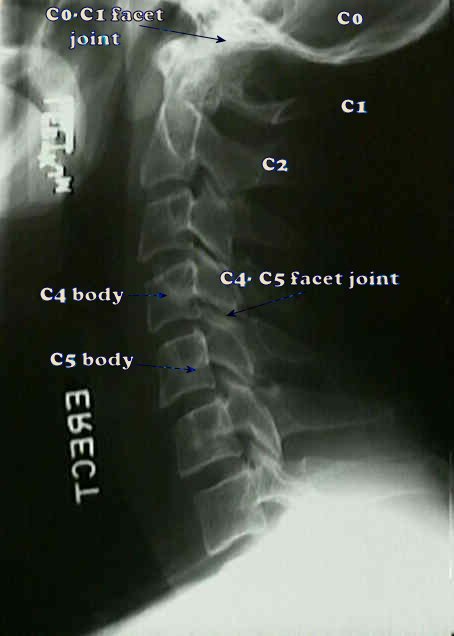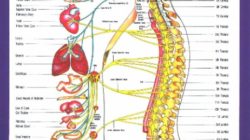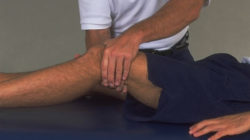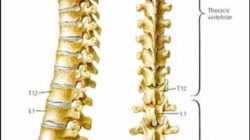Neck Pain Treatment
HISTORY
Neck pain treatment per se is not usually painful with chiropractic. Let’s say candidly though that a really sore neck is much more painful than a sore back. The consultation always begins with a thorough HISTORY. Your chiropractor will ask you questions like, Where does it hurt? and When did it begin? What makes it worse, and does it run down your arm or give you headaches?
70% of the time, research shows, experienced doctors can make an a pretty shrewd diagnosis of your neck pain just from the history.
Neck pain is often caused by old injuries that caused fixations in your neck, often unknown to you. It has now been proved that these fixations slowly but surely lead to arthritis ( Chiropractic subluxations ) in the neck, causing stiffness, pain and perhaps tingling in the arm, long after the injury has been forgotten. Why? Because they starve the joints of vital nutrients. Strawberries for an arthritic neck? Yes, ma’am! INTERESTING FACTS ABOUT STRAWBERRIES …

Before starting the chiropractic neck pain treatment your doctor will ask searching questions that may yield important clues. So, scratch your head, dig deep, those little details can be very important. For example, if you get tingling or pain in the arm, do movements of your neck provoke the tingling? Which movement? Or is constant? Do you get relief from the tingling in your arm by placing your arm on your head? SHOULDER ABDUCTION RELIEF Also important, though it occurs very rarely, has there been any change in your gait, the way you walk? Have you been stumbling, or walked unexpectedly into the doorframe?
FROM THE COALFACE
Mr Jones entered the consulting room with a thick scarf around his neck, even though it was midsummer. His wife was close behind him. One look at his face, and his hand clutching his neck in support, left me in no doubt where the problem was. A very sore neck. To turn his head, he turned his whole body.
‘When did it start, Mr Jones?’
‘Yesterday,’ he said in a whisper.
‘Do you have any idea what happened?”
‘I was fine when I woke up,’ he said. ‘As I sat up I felt a sharp stab in my neck.’ He had a stricken look on his face.
To cut a long story short, as I move to exam him, tears of doubt immediately filled his eyes. He didn’t want anybody anywhere near his neck, let alone someone whom he thought might cause him great pain.
Mrs Jones spoke for the first time. ‘Jerry was at Israeli judo yesterday. Do you think that could have anything to do with it?’
Before starting the chiropractic neck pain treatment your doctor will ask searching questions that may yield important clues. So, scratch your head, dig deep, those little details can be very important. For example, if you get tingling or pain in the arm, do movements of your neck provoke the tingling? Which movement? Or is constant? Do you get relief from the tingling in your arm by placing your arm on your head?
EXAMINATION
Neck pain treatment is always preceded by an examination which will be thorough as your doctor seeks to understand the exact nature of your condition.
It will usually start with a POSTURAL ANALYSIS. The underlying root cause of your neck pain may be a flat foot, a short leg, an imbalance in the pelvis or another seemingly unrelated problem.
RANGE OF MOTION tests of neck will follow. Which movements are restricted, which cause pain? In particular, do any movements of your neck immediately cause pain or tingling in your arm, or dizziness?
Then will follow ORTHOPAEDIC and NEUROLOGICAL tests. At the heart of chiropractic is the influence that these subluxations in your neck may have, causing not only neck pain, but influencing any of the many organs innervated by nerves that emerge from tiny openings called foramina in your neck.
This will be followed by an examination of the MUSCLES in your neck and shoulders. Subluxations in your neck, as well as poor posture may cause muscular imbalances, and pain in the muscles themselves.
A MOTION PALPATION examination in the patient with neck pain is an extremely important part of chiropractic treatment. Knowing which bones in your neck to adjust, and how to adjust them, is a vital part of curing your headaches, neck pain, arm pain and in improving your general health.
While chiropractors do not make many claims about curing other ‘medical’ conditions, it is astonishing how many patients ask if their sinusitis, asthma, stomach pain could have been helped by the chiropractic treatment they have been receiving.
Thereafter your doctor may look for such conditions in the shoulder, arm, and elbow, and such conditions as carpal tunnel syndrome which often issue from a neck condition.
Finally, before starting your neck pain treatment, your chiropractor will do a general medical examination, checking your blood pressure, look for swollen lymph nodes, listen to your lungs, and perhaps even do a breast exam. It’s always advisable to take a family member along for the first consultation. Because the nerves to the arm (the so called brachial plexus) travel close to the lungs and breast, these organs can also have an effect on your arm.
X-RAYS
X-RAYS are not always taken before the neck pain treatment begins, but they frequently reveal important information that your doctor could not otherwise have guessed.
A picture is worth a thousand words.

POSTURE.
Sitting for long periods with poor posture causes inevitably neck pain. This lady, painted by famous Dutch painter Gerard ter Borch, has pain!

Looking at the neck from the side, it has a normal curve, called the ‘cervical lordosis’. Injury and even poor posture can change this curve, causing either a straight neck, a forward bending neck (called a ‘cervical kyphosis’) and even increase the lordosis. Changes in this normal lordosis, in my experience, are always associated with pain.
Chiropractic neck pain treatment adjustments can sometimes make dramatic changes to this pattern, but poor posture will contribute to a relapse. Expect your chiropractor to ask searching questions about your computer station and your desk. Look to the bottom of this page for a good alternative.

RESEARCH.
Data was collected directly from chiropractic neck pain treatment patients in a very large study after 28 807 neck pain treatments in order to find out whether there was worsening of symptoms, and what beneficial effect the treatment had. (indexed research journal JMPT March 2008)What did they find?
The presenting symptoms were “neck pain,” “shoulder, arm pain,” “reduced neck, shoulder, arm movement, stiffness,” “headache,” “upper, mid back pain.” If patients had one of these symptoms, 70% responded that they experienced immediate relief after chiropractic treatment. If four of these symptoms were present, then 95% stated that they had immediate relief.
With regard to immediate worsening, 4.4% stated that they felt worse.
There were no serious side effects after any of these neck pain treatment manipulations. Any worsening was of a very temporary nature.
EXERCISES
Interesting research in Spine journal (Feb 2009) shows that one can exercise the neck during neck pain treatment by raising your arm to the side. Raising your right arm to the side, what we call abduction, to 90 degrees, with a 2kg weight in your hand, causes the cervical vertebrae (all of them) in healthy people to rotate to the left.
Interestingly, raising your right arm to 120 degrees causes a counter rotation, the lower cervical vertebrae to the left and the upper vertebrae to the right.
Clinically, what we are unsure of is: should you raise one arm, and thereafter the other? Or only one arm, if you have pain on the right say? (and which arm would have the most benefit?)
And if you have upper neck pain, is the counter rotation of raising the arm to 120 degrees (to the side remember), more beneficial, or counter-productive? We just aren’t sure.
Suggestion: So, be your own researcher.
- Raise the arm on the side of pain in your neck to 90 degrees to the side, repeatedly for three days without a weight, and then for three days with a bottle of water, say, in your hand. Hold for 8 seconds. (Why 8? Because that’s been shown to be most beneficial for pnf exercises).
- Repeat with the arm opposite the side of pain for three days. Is one definitely more beneficial than the other? Make notes.
- Then do the exercise first to 120 degrees on the side of pain, that we know produces counter rotation, and then opposite to the side of pain for three days. Make more notes.
Learn to be your own researcher. Test what works best for your body. There are so many unknowns still in health care. It could be that if you have a short right leg, you should raise the right arm, but maybe the left. We just don’t know. Get to know your own body.
Ps. We would love some feedback. What did you find? What should the chiropractic scientists be researching?
Neck exercises and a simple test. Julls Test …

Is Chiropractic treatment painful?
Research proves that neck pain treatment is usually very successful with chiropractic. 70% of patients report immediate improvement (see more below). It’s not usually painful, even in the patient with a very painful neck. It should be acknowledged that there are exceptions, but these will be few and far between.
Mostly there will be some loosening of the neck, mobilisation and stretching, in preparation for the manipulations. Your doctor may do some massage, may use some physiotherapeutic treatments such as dry needling, ultrasound and various electrical treatments.
The chiropractic adjustment itself may be a little frightening the first time you experience it.
Research has shown that manipulation done by an experienced chiropractor is really very safe. Far safer than the anti-inflammatories that are prescribed without undue concern. They cause thousands of deaths from bleeding ulcers every year. Literally, no exaggeration. However, like all treatments, there is an element of risk with chiropractic neck pain treatment too. Some pain may be experienced after the treatment, but this is usually after of a short lived nature. An ice pack placed (in a facecloth) on the painful parts will bring relief.How many treatments?It must be acknowledged that this is very dependent on your problem. Some neck pain treatment conditions respond immediately, some take months of treatment.Broadly the neck pain treatment will fall into three parts, if the condition has been present for more than six months:1) The TREATMENT PHASE. In this phase your doctor will be dealing with the problem, reducing your pain and stiffness by adjusting the subluxated vertebrae. This will also reduce any nerve irritation or pressure that may be present.2) The REHABILITATION PHASE, sometimes called the STABILISATION PHASE. During this phase many exercises will be given. The intention is to strengthen your neck, to prevent a relapse, and so that you won’t need to come for treatment several times a week for months and months.3) The MAINTENANCE PHASE. It is the conviction of chiropractors that an occasional, regular treatment has much benefit in preventing relapse. In this regard you will be encouraged to have an adjustment occasionally. How occasionally? That depends on your problem. Perhaps once a month, perhaps once in six months. On average perhaps every two or three months.A REALLY PAINFUL NECK IS FAR MORE PAINFUL THAN A SORE BACK.Nevertheless, neck pain treatment is not usually particularly painful.Massage can be a very beneficial part of back pain treatment. Much of neck pain is simply too many hours spent at the wheel of the car, or stuck in front of a computer. An occasional but regular massage can do wonders for overworked muscles.



